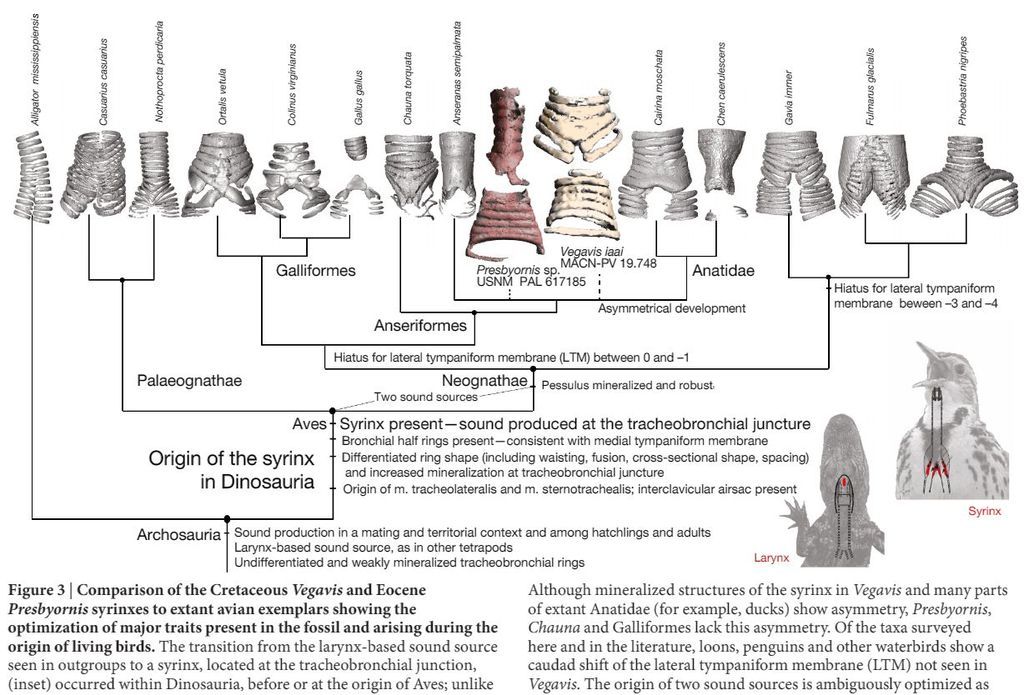mollwollfumble said:
A quick conclusion is that, not just did “birds” survive the catastrophe that killed off the dinosaurs and marine reptiles, at least five distinct species of birds survived the catastrophe. To wit (too whit) the ratites, albatrosses & loons, the chicken & quail, the screamers, and the ducks & goose.
If the passerines (songbirds) were not a distinct group when the dinosaurs died, then what did they evolve from? The earliest known passerine fossils are 55 mya, after the end of the dinosaurs. The passerines evolved from a group that included near-passerine woodpeckers and kingfishers. Further back, the passerines and parrots evolved from a common ancestor. Even further back, the passerines and falcons evolved from a common ancestor. The primordial “neoave” lived at the same time as the dinosaurs.
http://www.nature.com/article-assets/npg/ncomms/journal/v2/n8/images_hires/w926/ncomms1448-f1.jpg
Annoyingly, the article quoted above just claims that the neoave radiation occurred during the Mesozoic, without giving any timescale in years by which this can be confirmed.
Looking further, at https://www.ncbi.nlm.nih.gov/pmc/articles/PMC1834003/ , it appears that the question of whether neoaves diversified when the dinosaurs were still around remains a highly contentious question.
“Molecular clock analyses have suggested that the earliest diversification of Neoaves had already occurred in the Cretaceous. However, the palaeontological record suggests that only a few neoavian lineages existed at the end of the Cretaceous, 65 Myr ago. There is an apparent conflict between earlier molecular datings and the palaeontological record—but is this conflict real?”
The first splitting of neoaves is into “Coronaves” and “Metaves”. The Coronaves include passerines, falcons and parrots as well as aquatic groups (eg. storks) and shorebirds (eg. jacana). The Metaves include nightjar/frogmouth, pigeons, swifts and hummingbirds.
When all is said and done, the above linked paper claims that there were nine separate neoave species that survived the death of the dinosaurs. Lets see if I can figure out what those are. The ancestral:
1. Eagle
2. Passerine
3. New World Vulture
4. Parrot
5. South American Passerine, eg Tyrant-flycatcher
6. Falcon
7. Stork/Fulmar/Rail
8. Swift/Frogmouth
9. Pigeon
More on https://www.ncbi.nlm.nih.gov/core/lw/2.0/html/tileshop_pmc/tileshop_pmc_inline.html?title=Click%20on%20image%20to%20zoom&p=PMC3&id=1834003_rsbl20060523f02.jpg
Add that to the previous five, and that makes at least fourteen distinct species of birds that all survived when the dinosaurs died out.
Weirdly, eight out of the nine neoave species that survived the death of the dinosaurs all evolved within the scant two million years before the dinosaurs died out. Which makes me wonder.
How did the birds know that the dinosaurs and marine reptiles were about to be wiped out?
(LOL)


